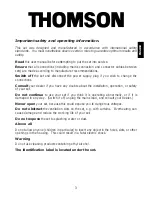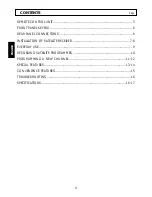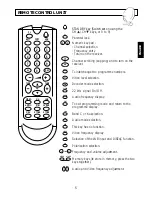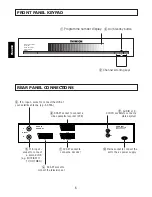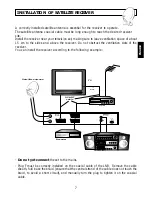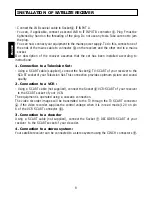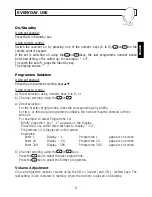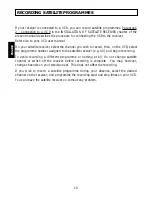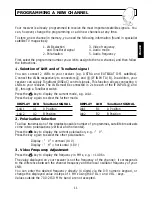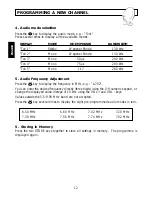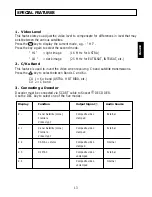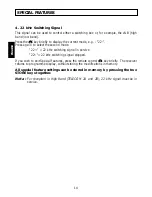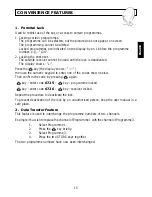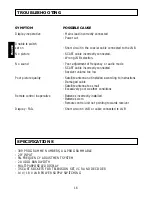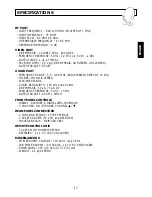
11
ENGLISH
Your receiver is already programmed to receive the most important satellite signals. You
can, however, change the programming or add new channels at any time.
To store a new channel in memory, you need the following information (found in specialist
satellite TV magazines):
1. LNB selection
3. Video frequency
and ToneBurst signal
4. Audio mode
2. Polarisation
5. Audio frequency
First, select the programme number you wish to assign to the new channel, and then follow
the instructions.
1. Selection of LNB and of ToneBurst signal
You can connect 2 LNBs to your receiver (e.g. ASTRA and EUTELSAT II-F1 satellites).
Connect the LNBs respectively to connectors
d
and
e
(IF INPUT A/B). In addition, your
receiver can supply ToneBurst (DiSEqC) control signals. This function allows connecting 4
LNBs to your receiver. The LNBs must be connected in 2s to each of the IF INPUTs
d
and
e
, through a ToneBurst switch.
Press the
key to display the current mode, e.g. LnA1.
Press the key again to select the further mode.
DISPLAY
LNB
ToneBurst SIGNAL
DISPLAY
LNB
ToneBurst SIGNAL
LnA1
A1
A Position
Lnb1
B1
A Position
LnA2
A2
B Position
Lnb2
B2
B Position
2. Polarisation Selection
To allow transmission of the greatest possible number of programmes, satellite broadcasts
come in two polarisations (vertical and horizontal).
Press the
key to display the current polarisation, e.g. : " V".
Press the key again to select the other polarisation.
Display : " V" = vertical (14 V)
Display : " H" = horizontal (18 V)
3. Video Frequency Adjustment
Press the
key to display the frequency in MHz, e.g. : «1406».
The value displayed on your receiver is not the frequency of the channel; it corresponds
to the difference between the channel frequency and the local oscillator frequency of your
LNB.
You can enter the desired frequency directly (4 digits) via the 0-9 numeric keypad, or
change the displayed value in steps of 1 MHz using the VOL + and VOL - keys.
Values outside the 700-2150 MHz band are not accepted.
VIDEO
V/H
LNB
PROGRAMMING A NEW CHANNEL


